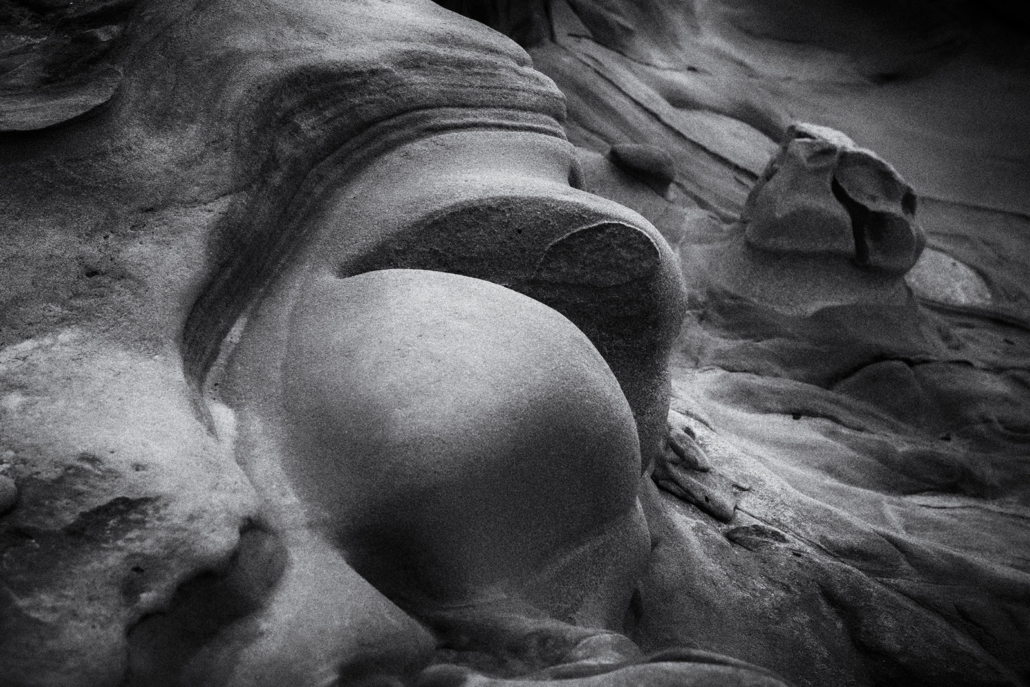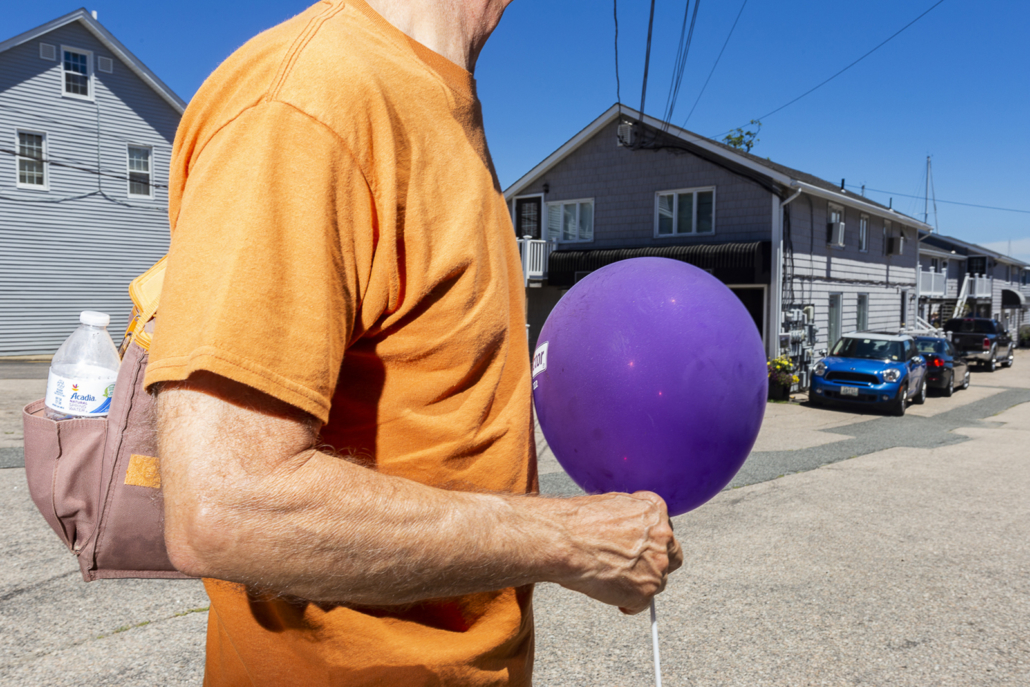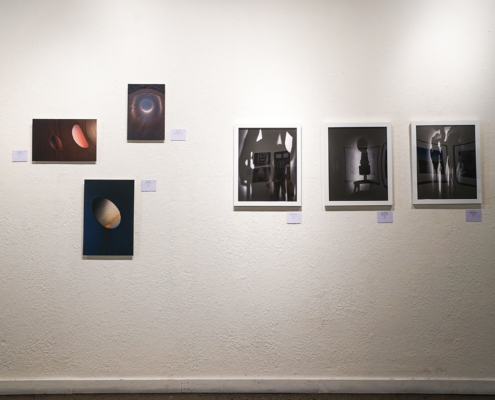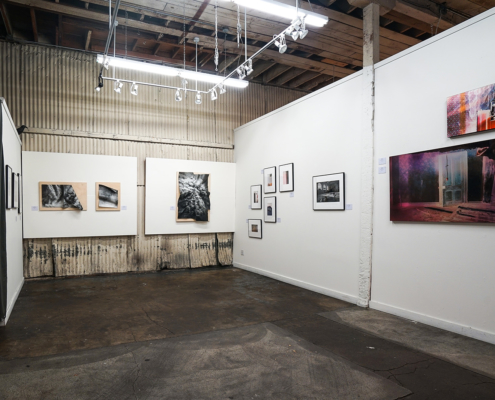CURATORS’ STATEMENT:
Magnetic Pull is a selection of works by members of the Bay Area Photographers Collective (BAPC), a community of photographers who nurture each other’s professional and artistic growth. As curators, we are interested in the support structures artists create to sustain their practices over time – especially in a region that attracts so many artists to live, study, and work.
Collectives are a strategy that particularly intrigue us: The promise of a self-selected community seems almost utopian. Going into this process, we were curious how that kinship might show up in the individual images and bodies of work made by each member. We intuited that some kind of attractive force might be at play, drawing the artists not only to the individual subjects that compel them toward image-making, but to one another as colleagues and co-conspirators. Read more.
While we did not set out to curate a show about “these times” (in fact, much of this work was photographed before shelter-in-place orders due to COVID-19 went into effect), we are struck by the haunted sense of isolation and desolation that reflects the surreal circumstances of the past year. From the empty waiting area of Nick Winkworth’s Snack Time to the unpopulated agricultural spaces of Steve Goldband & Ellen Konar’s images of the Central Valley, from Tom Lavin’s abandoned structures to Nathalie Strand’s ghost-like images of interiors seemingly from another era — many of the spaces that make up this exhibition are marked by an uncanny lack of inhabitants. A deeper kind of loss permeates Angelika Schilli’s intimate untitled photographs of her Oma’s apartment and Mitch Nelles’ images of crumbling mausoleums.
Many of the landscapes have an otherworldly aura, toying with the camera’s ability to represent the physical world, some with a humorous edge. Richard Dweck’s rocky vistas and Rose Borden’s fog-filtered images evoke a sense of wonder and mystery. Maria Budner’s lone palm tree spied between barbed wire–topped fences invites interpretation, while Linda Fitch’s tree study from Hokkaido, Japan, offers a poetic visualization of seeing the forest for the trees. Ralf Hillebrand’s Bakersfield, California, juxtaposes gleaming metal pipelines among the arid fields. Steve Raskin’s series Error Messages memorializes the absurd and makes one wonder if perhaps what we are seeing are the remnants of some kind of alien abduction. Tamara Danoyan’s Inner Circles, not quite interior or exterior, evoke planetary portals. Form and Formless, by Cindy Stokes, hover somewhere between image and object, eliciting an intense, unconfined energy as if the flattened images of crashing waves have compelled themselves back into dimension.
When there are figures present in these photographs, they often function more as forms than as portraits – a tension exploited in Gene Dominique’s mysterious images of shadows in the museum and Ari Salomon’s humorous grouping of faces found in objects. Dan Fenstermacher frames the people in his works so that they are all nearly faceless, their cropped torsos and legs filling the frame with the color and pattern of their clothing. Rusty Weston’s images of video gamers playing together in public draw attention to the players’ intense focus and hunched submission. Only Anthony Delgado’s scenes of street life are fully animated by moments of preparation and waiting before a public celebration.
When pulled together, these images engage us in contemplating the tangled world around us, our need to explore it and understand it. The attractive forces at play – whether in the images themselves or the collective engagement of the artists who made them – are as complicated as the varied subjects on view: haunted and humorous, isolated and otherworldly, desolated and surreal.
– Curators Daniel Nevers and Jennifer Brandon
Daniel Nevers is an artist and educator with 20 years of experience in the nonprofit sector. He currently serves as executive director of the Berkeley Art Center and has held senior administrative positions at educational institutions, social justice nonprofits, and other community-based arts organizations. Nevers has curated and juried independent projects throughout the Bay Area, including shows at the Mills College Art Museum, Southern Exposure, K Gallery, and window projects in Alameda and Napa. He has taught studio art and professional practices for artists at the University of California, Berkeley, California College of the Arts, and Mills College. He holds an MFA from Mills College and a bachelor’s degree in journalism from the University of Texas at Austin.
Jennifer Brandon is an artist engaged in image making, effecting transformations of humble materials intended to conserve, conceal or fix. She holds an MFA from Mills College with an emphasis in photography, an MA in Art from CSU Northridge with an emphasis in painting, as well as BAs in English Literature and Studio Art. Brandon’s work has been shown at Bay Area venues including Mills College Art Museum, SF Camerawork, Headlands Center for the Arts, Casemore Kirkeby Gallery, The San Jose Institute of Contemporary Art and Stephen Wirtz Gallery. Residencies, awards and fellowships include The Rayko Artist in Residence, The Herringer Prize for Excellence in Studio Art and The Catherine Morgan Trefethen Fellowship in Art. Brandon currently teaches at Mills College, and has taught at San Francisco State University, Sonoma State University, De Anza College and UC Berkeley.>








































































